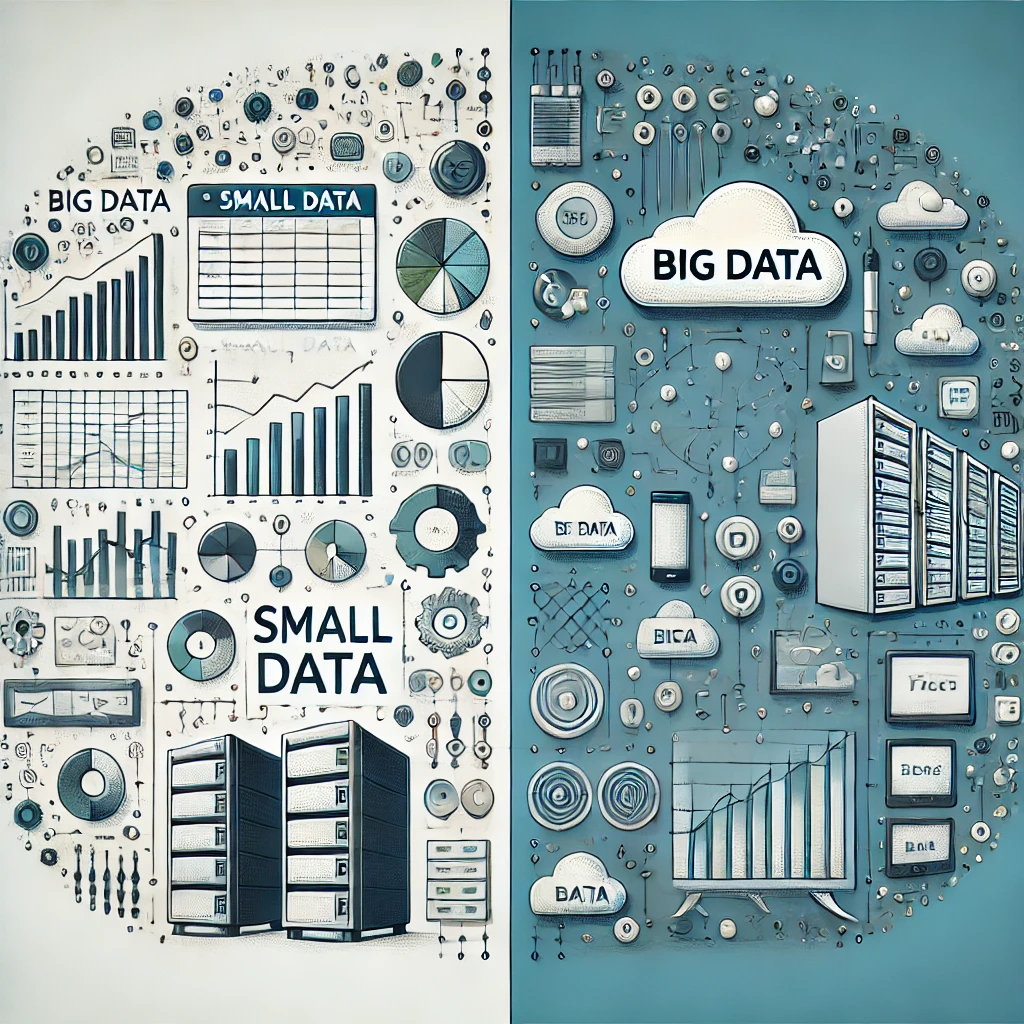Small Data & BigData
 Data Monk
Data Monk
In the age of technology, Big Data is widely discussed, but we hear less about Small Data. Each type of data has its unique applications and value depending on its usage goals. Let’s dive into the distinctions between them and explore how they complement each other.
1. Definitions
Big Data refers to massive datasets that exceed the processing capabilities of traditional tools. Big Data often comes from diverse sources, such as social media, IoT sensors, system logs, and financial transactions, collected in real time.
Small Data, on the other hand, is composed of small, easily analyzed datasets that do not require complex technologies. Small Data often comes from user surveys, feedback, or small-scale research, aiming to clarify behavior or preferences within a smaller group.
2. Technical Characteristics
Big Data is characterized by the 5Vs:
Volume (large amounts)
Velocity (high speed)
Variety (different formats and sources)
Veracity (complex accuracy)
Value (high value when properly harnessed)
Big Data requires distributed storage systems like Hadoop or Spark and is often analyzed with complex tools, such as machine learning, to yield predictive insights.
- Small Data does not require distributed systems or complex tools for processing. It has a smaller volume, is easy to manage, and can be handled with simple analytics tools like Excel or visualization platforms like Tableau.
3. Practical Applications
Big Data is ideal for large enterprises seeking to understand market trends or predict large-scale customer behavior. For example, Amazon and Netflix use Big Data to personalize user experiences, recommend products, and optimize supply chains.
Small Data is more effective when aiming to understand a specific group or address a narrow issue. For example, a company may use Small Data from customer surveys to improve a specific product or analyze feedback from an event to refine future planning.
4. The Complementary Relationship between Small Data and Big Data
In many cases, Small Data can supplement Big Data by providing context. For example, while Big Data might reveal trends in purchasing behavior, Small Data from interviews can offer insights into customers' motivations. Combining these two types of data provides a comprehensive analysis that not only forecasts but also explains the reasons behind trends.
Conclusion
Both Big Data and Small Data play essential roles in decision-making and improving business performance. Big Data provides a broad overview, while Small Data adds detail and enables targeted strategies. Choosing between these data types depends on business goals and the analytical resources available within the organization.
Subscribe to my newsletter
Read articles from Data Monk directly inside your inbox. Subscribe to the newsletter, and don't miss out.
Written by
